Sneezing is a very common condition in cats that can be life-threatening. There are several pathogens that can play a role in sneezing. These include feline herpesvirus and feline calicivirus. In addition, we also know of two bacteria that can sometimes play a role: Chlamydophila felis and Bordetella bronchispetica. These pathogens get into your cat's nose or eyes and cause inflammation there.
Which cats are at risk?
Basically, any cat can become infected. The infection pressure is higher when cats live in a group, e.g. B. in an animal shelter or a kennel. Unvaccinated, young or older cats and cats with weakened immune systems are most at risk. This includes cats suffering from FeLV (feline leukemia virus) or FIV (feline AIDS). Healthy cats usually show only mild symptoms, and these animals often recover on their own. Higher-risk cats often have more severe symptoms, which are more likely to be fatal.
How does my cat get the sneezing disease?
The causative agents of sneezing disease spread in the same way as the common cold virus in humans. They can be transmitted through sneezing, but also through nasal and eye discharge. The feline herpes virus can be transmitted from mother to kitten immediately after birth.
What are the symptoms?
The symptoms can be very different. They range from a mild infection where the cat just sneezes and a runny nose to very severe cases where the cat also has eye infections, fever, loss of appetite and lethargy. She doesn't want to eat because cats need to smell her food. If your cat's nose is blocked and it can no longer smell, it will no longer be interested in eating. In some cases, mouth sores develop (which are painful and make your cat unwilling to eat) and your cat drools a lot.
How is sneezing disease in cats treated?
In most cases, it is unnecessary to find out the pathogen. Your veterinarian can get a good idea by looking at your cat's symptoms. However, in a kennel or animal shelter, it can sometimes be useful to know exactly which pathogen is involved. In this way, transmission to other animals can be better taken into account.
Treatment is unnecessary in most cases. Often a virus plays a role against which there are no drugs. Sometimes it is necessary to support the cat and only treat the symptoms (symptomatic treatment). This is particularly important for young animals. Symptomatic treatment consists of eye ointment and anti-inflammatory agents. It is very important that your cat eats and drinks adequately, you may need to force feed her. If necessary, you can reheat canned pie to make it smell stronger.
Antibiotics are rarely necessary and often do more harm than good. Antibiotics often have diarrhea as a side effect, which can be very dangerous, especially in young animals. Antibiotics, which work against the bacteria that cause sneeze disease, can also have serious effects on the development of the pups. Antibiotics are often given only when additional infections are present or when the animal's overall condition is very poor.
Can I prevent sneezing disease in cats?
Vaccinated animals usually go through a much milder infection and recover much faster. The probability of a fatal outcome is minimal. However, it is important to keep vaccination up to date. Vaccination immediately after an infection usually makes little sense. It is often better to let the cat recover properly first and then vaccinate. The animals can also get mild symptoms from the vaccination. Therefore, it is advisable to wait until your cat is fully recovered and healthy. Since several pathogens play a role, a vaccinated animal can still become ill.
Is sneezing disease a recurring disease?
It is quite possible for a cat to sneeze several times. As described in the first paragraph, there are 4 possible pathogens. When your cat gets sneezing disease, it usually doesn't get all 4 pathogens at the same time. It is therefore quite possible that after a year (or longer) your cat will come into contact with another pathogen and then become ill again. In vaccinated animals, each subsequent infection is often much milder.
The feline herpes virus also plays a role in many cases. Herpesviruses are very nasty viruses because they stay in the body and every time you get a little sick, the herpesviruses can become active again. This is similar to a cold sore in humans, which is also a herpes virus (but a completely different species). Every time you catch a cold, that nasty cold sore comes back. The sneezing disease in cats caused by the herpes virus is exactly the same, but each subsequent time is milder than the first time.
This text was translated by a translation machine
 Horse Pharmacy
Horse Pharmacy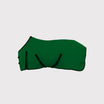 Rugs
Rugs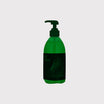 Care
Care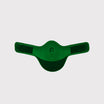 Saddle and Attachments
Saddle and Attachments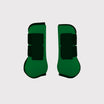 Leg Protection
Leg Protection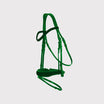 Bridles
Bridles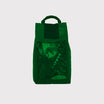 Feed
Feed Fly Masks
Fly Masks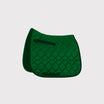 Saddle Pads
Saddle Pads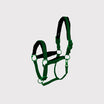 Headcollars and Ropes
Headcollars and Ropes Bits
Bits Other Disciplines
Other Disciplines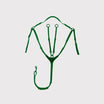 Reins and Auxiliary Reins
Reins and Auxiliary Reins Clipping
Clipping Western
Western Eventing
Eventing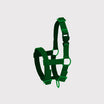 Foals
Foals Reflection
Reflection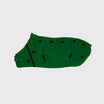 Therapy Products
Therapy Products Boots and Shoes
Boots and Shoes Breeches and Belts
Breeches and Belts Tops
Tops Safety
Safety Competition
Competition Heated Clothing
Heated Clothing Gloves
Gloves Socks
Socks Spurs and Attachments
Spurs and Attachments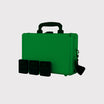 Technology
Technology Whips
Whips Gifts
Gifts Casual Wear
Casual Wear Underwear
Underwear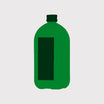 Rider Pharmacy
Rider Pharmacy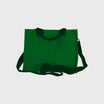 Bags
Bags Books
Books Laundry supplies
Laundry supplies Jewelry
Jewelry Feed and Waterbowls
Feed and Waterbowls Equipment
Equipment Tack Room
Tack Room Pest Control
Pest Control Arena
Arena Horse Toys
Horse Toys Wheelbarrows
Wheelbarrows Yard
Yard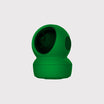 Surveillance
Surveillance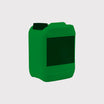 Disinfect
Disinfect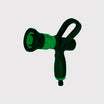 Washing Area
Washing Area Lighting
Lighting Horse Pasture
Horse Pasture Current Conductors
Current Conductors Pole
Pole Insulators
Insulators Energisers
Energisers Gate Handles
Gate Handles Batteries and Accumulator
Batteries and Accumulator Nets
Nets Grounding
Grounding Tools
Tools Fencing Security
Fencing Security Wolf Defense
Wolf Defense Fencing Sets
Fencing Sets Fence locks
Fence locks Dogs
Dogs Cats
Cats Rodents
Rodents Dogs Pharmacy
Dogs Pharmacy Cats Pharmacy
Cats Pharmacy Rodents Pharmacy
Rodents Pharmacy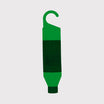 Cattle Pharmacy
Cattle Pharmacy Poultry Pharmacy
Poultry Pharmacy Veterinary Supplies
Veterinary Supplies Cattle
Cattle Sheep and Goats
Sheep and Goats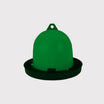 Poultry
Poultry Heat Lamps
Heat Lamps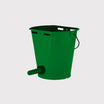 Calves
Calves Marking
Marking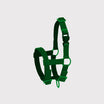 Halters
Halters